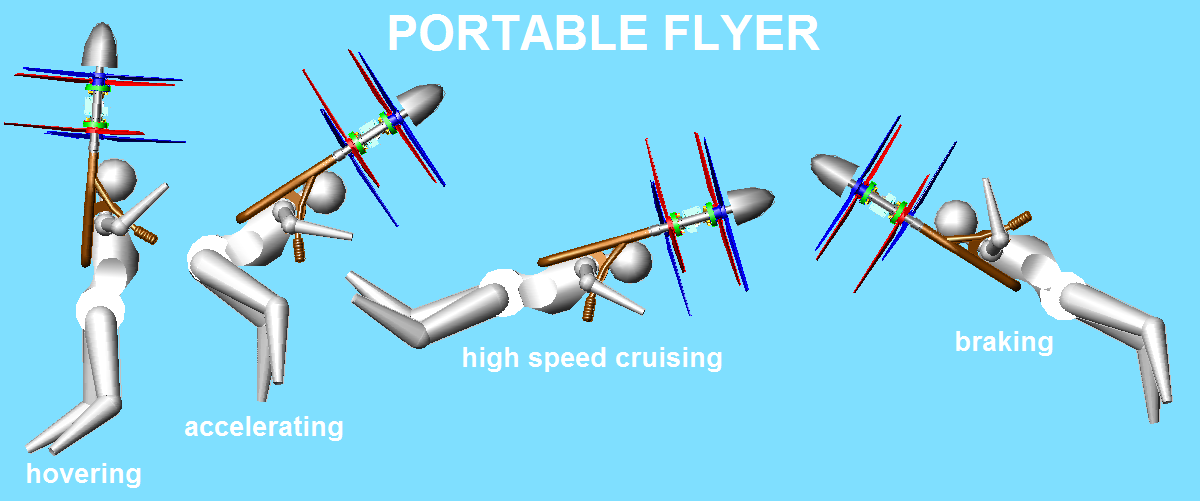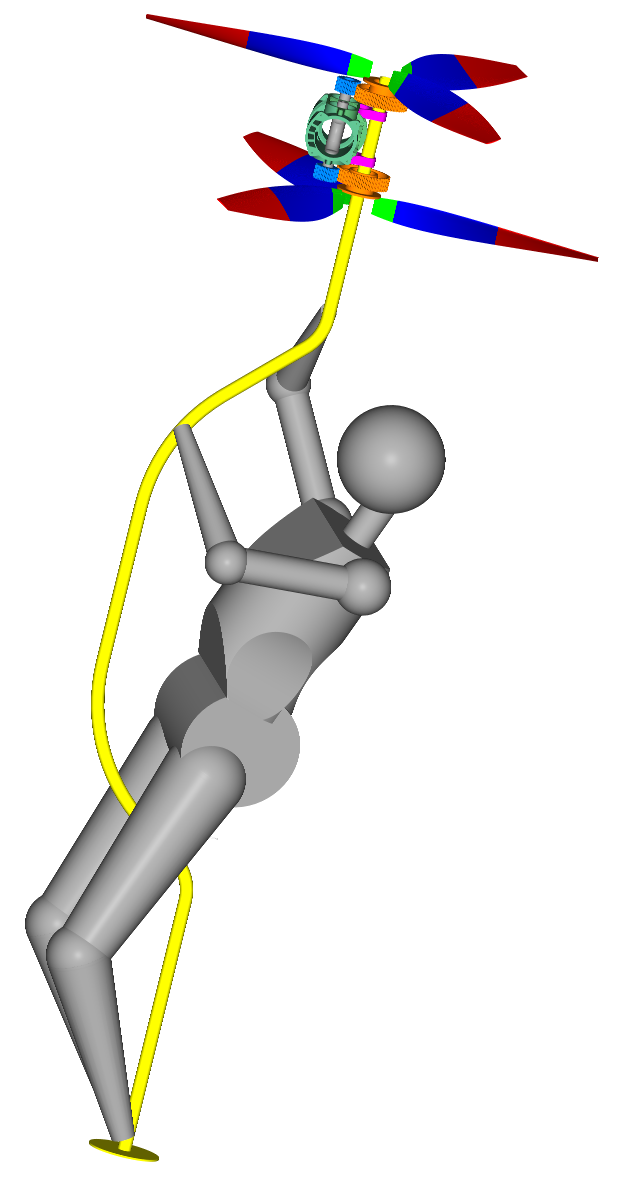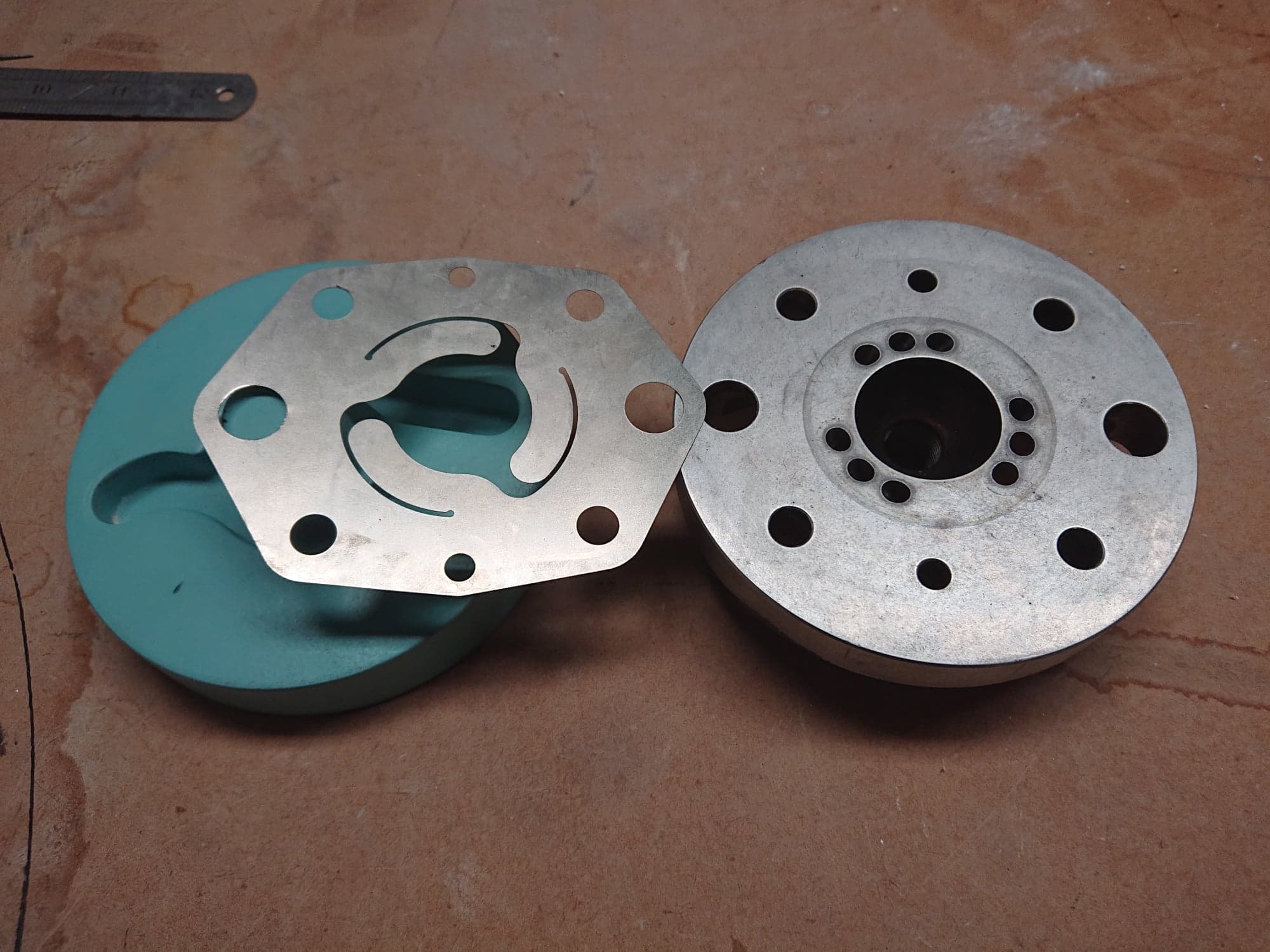Hello DrAcula and thanks for your time.
.
You write:
“What if you hit something which damages both rotors on one side? which is quite likely to happen with such a setup You would have asymetrical lift which you can't recover.”
The case reminds the Broom Portable Flyer:
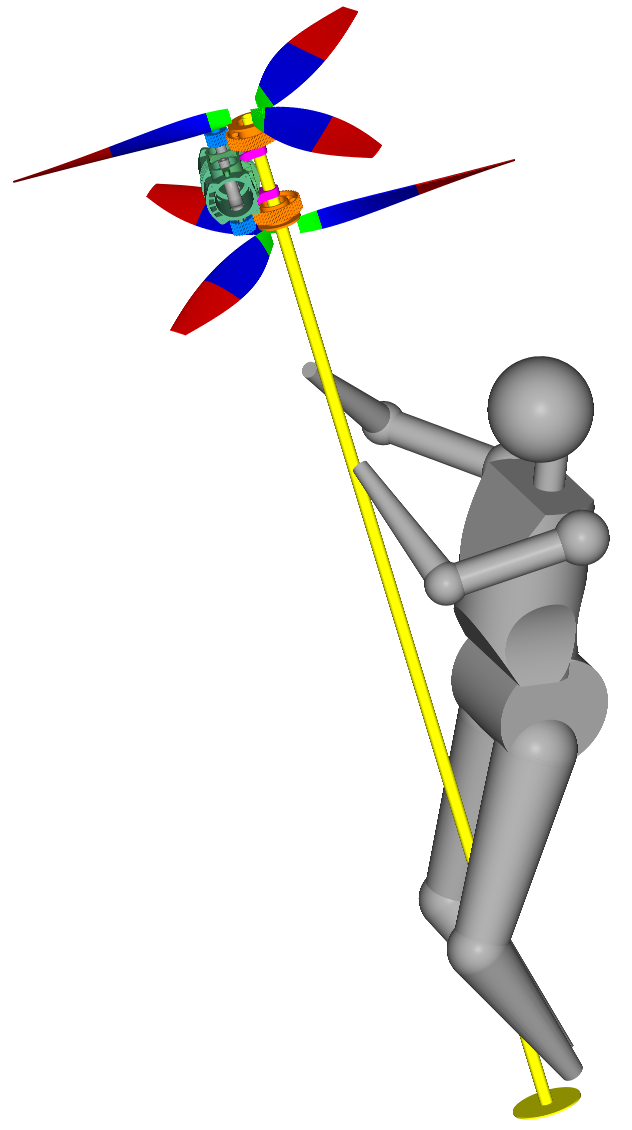
A difference is that in the Broom version the two contra-rotating propellers are synchronized, while in the damaged Portable Flyer (where a pair of side propellers is damaged or disengaged from their engines) the pilot has to balance the two throttles (by the gas cables) in order to balance the two reaction torques and avoid this way an uncontrolled spinning (i.e. what happens when a helicopter loses its rear propeller).
Another difference is that the pilot has to bend his body to put his center of gravity close to the “working” rotation axis (i.e. under the two running contra-rotating propellers).
For the rest, the pilot can still control the flight in order to land safely.
The small distance of the two rotation axes (~550mm) makes possible the above: at normal conditions the center of gravity of the pilot is less than 300mm (1ft) offset from each rotation axis, i.e. bending his body the pilot can displace the centrer of gravity near the "working propellers" rotation axis.
Compare the above case / options with an Osprey V22 at 200m, almost standing and “prepared” for a vertical landing. If one propeller is damaged (say by hitting an obstacle) a catastrophe will follow. With one only propeller the OSPREY cannot hover.
You also write:
“Than an other thing. If i would hover in 5 or 10m hight and one engine seizes, does the other one automatically increase power or would i have to do this myself, in which case it's highly likely that i have not enough time to assess the situation and react to it before i come crushing down, with one pair of rotors still spinning which generates a chance to injure me further or even kill me.”
The tests will be at lower /safe height, initially over water (0 to 3m height), then above the ground (~1m height), away from people and vehicles.
A fall will be less risky than a fall with a motorcycle running within the traffic.
After many – many – many hours of flight at low height, the engines will show their reliability / problems.
At this height (~1m) the manual control is the simplest control.
Later we will see whether the electronic interconnection of the two engines is useful.
As for today, I am looking for a simple / reliable /
affordable injection / ignition system.
You also write:
“ How heavy is somebody allowed to be, that one of your engine can keep him in the air? And i don't wanna know what other engines can achieve, what do you think your engine can do? I'm a a bit on the fat side so i don't think i'm ideal anyway, but remember, an average european male is over 80kg in underpants.”
Quote from the Device Technical Report at
https://www.pattakon.com/GoFly/DTR_1.pdf
“Safety
In case of malfunction of the one engine, or in case one propeller hits an obstacle and falls apart, or in case a transmission tooth belt is broken, or . . ., the “healthy” engine-propellers-set is sufficient for a safe landing. With the one only engine running at 9,000rpm (mean piston speed: 9m/sec) and driving its two 3-blade 39’’ diameter / 28’’ pitch propellers at 3750rpm (2.4:1 reduction): the total thrust force is calculated at 250lb (115Kp), the tip speed is 195m/sec (57% of the sound velocity)”
And
“Fast take-off (at emergency, or from distant / unpopulated areas etc)
With both engines running at 9,000rpm, the upwards acceleration at a “fast take off” is more than 1g (10m/sec^2); it is like “falling towards the sky”.
Alternatively: the PORTABLE FLYER can carry two persons (the pilot and a passenger); in this case at a malfunction of the one propulsion unit, the emergency landing is not possible without opening the parachutes.”
End of Quote.
I.e. the Portable Flyer is meant to fly with a pilot of 90Kg even in case of an engine stall. With both engines running (and based on a parachute for landing in case of emergency), besides the pilot it can carry one more persons weighing 110Kg.
You also write:
“ Hanging in a 6 point harness isn't exactly comfortable, especially for men. So i hope you have a solution that wouldn't cut the blood flow to the testicals for your proposed up to 2 hours flight time.”
There is a simple and lightweight solution for this problem.
And it was tested for hours.
It is so comfortable that you can read a complete book “hanged” from a tree branch forgetting, most of the time, you are “hanged”.
Here is the basic idea:
An overalls (like those the mechanics wear) has “closed” legs whereon the feet of the “pilot” abut.
The harness remains for safety, but pilot’s weight is no longer supported by his upper legs area, but by his feet (say like standing on a floor).
If the pilot bends his legs, the weight is taken by the harness.
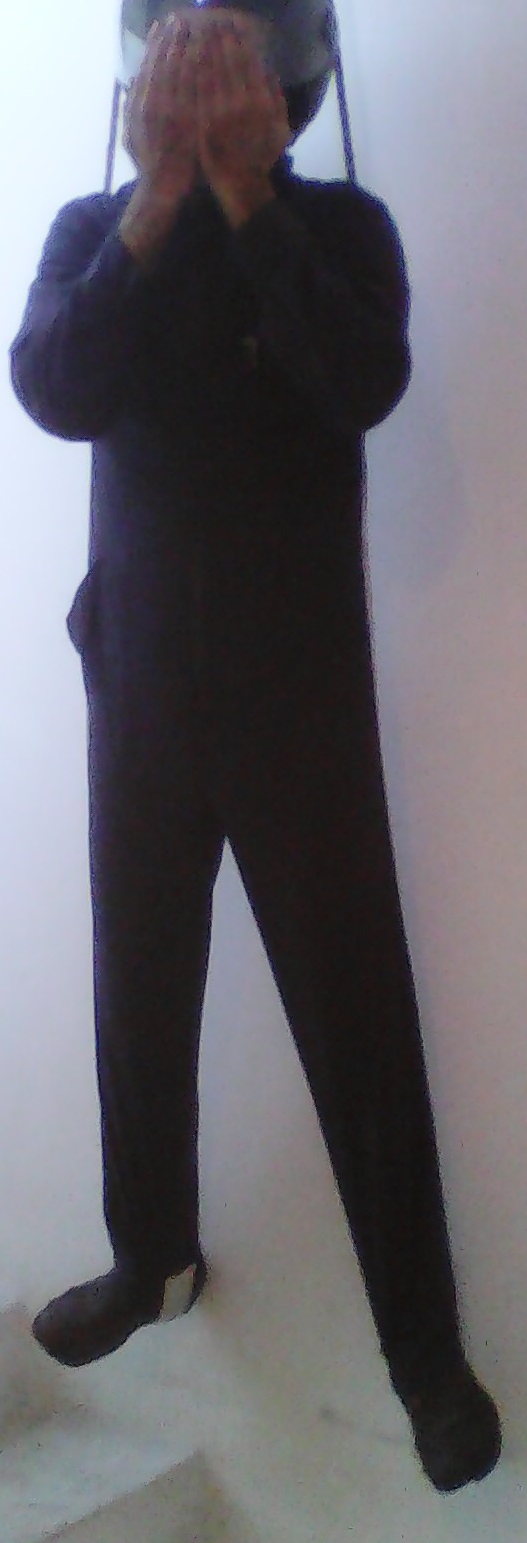
In the photo the feet of the guy are on the air.
With two ropes the overalls is hanged from the ceiling.
The armpits of the guy take no force.
Spot on the white cloth band where the right shoe of the guy stands on.
Spot on how much stretched are the trousers of the overalls.
You also write:
“ And one more thing. You came up with the "pendulum rocket fallacy". But you didn't seem to notice, that your construction has exactly the same problem. Center of lift is above center of gravity, right? So what if, i can't bring the center gravity excatly under the center of lift for what ever reason?
if you tilt your rotorsystem to compensate for that, you induce a lateral movement. So basically, your personal flyer can't properly hover if the CoG isn't exactly under the CoL. And let me guess, do you plan to store the Fuel in a backpack? What do you think where the CoG goes when you attach a 20kg backpack to the person hanging under your flyer?”
No.
There is no “center of lift”.
This is what the “Pendulum Rocket Fallacy” explains and analyses.
What there is, is a “thrust axis” (or “lift axis”).
And what the pilot does, is to displace the “thrust axis” relative to the overall center of gravity (also called “weight displacement control”, which is not correct as an expression, because the pilot cannot displace their center of gravity; what the pilot can displace is the thrust axis relative to their center of gravity).
Think the case wherein the pilot and the Portable Flyer fall freely in the air. There is nothing to abut on, or to take reaction forces from. If pilot wants to change the orientation of the rotation axes of the propellers relative to their body, pilot just bends their back, or spinal cord, or pilot displaces limbs / head relative to the engines/ propellers.
So, forget the thrust point and think based on the thrust axis.
With a thrust axis the position of the center of gravity cannot be “under” or “above”.
With a thrust axis the position of the center of gravity can be either on the thrust axis, or off the thrust axis (which creates a moment that tends to change the thrust axis direction).
This moment is what the pilot exploits in order to vector the thrust to the desirable direction.
So, please re-read the “Pendulum Rocket Fallacy” article, but with intuition aside.
Just take the physical laws and apply them.
For the fuel:
The back of the pilot is not a good place to put the fuel tank (think of the high speed downstream of the propellers falling directly on a fuel tank).
Better place is around pilot’s legs, near pilots feet. During take off and landing the upper body of the pilot is not loaded by the fuel weight.
Thanks
Manolis Pattakos






